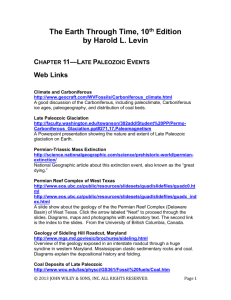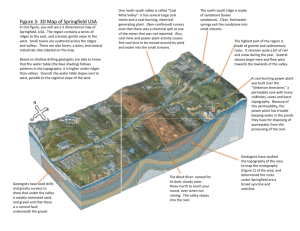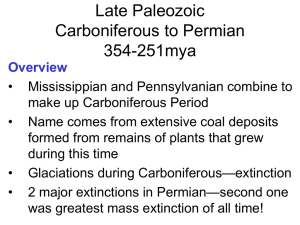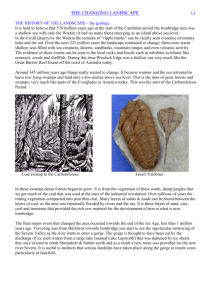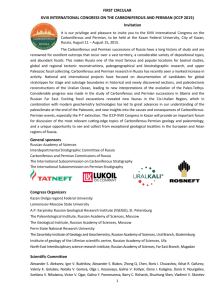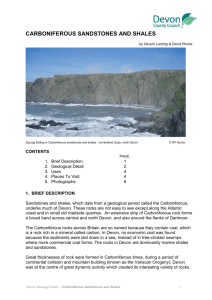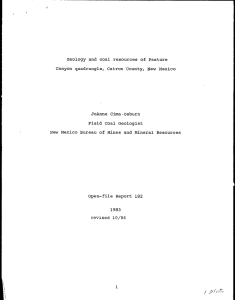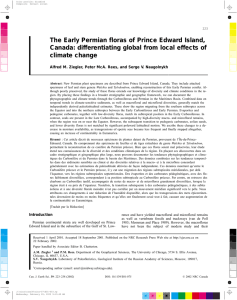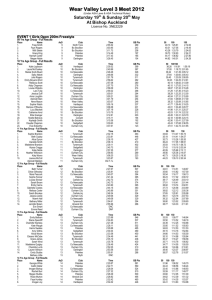Fourteen members assembled next to an old quarry underneath
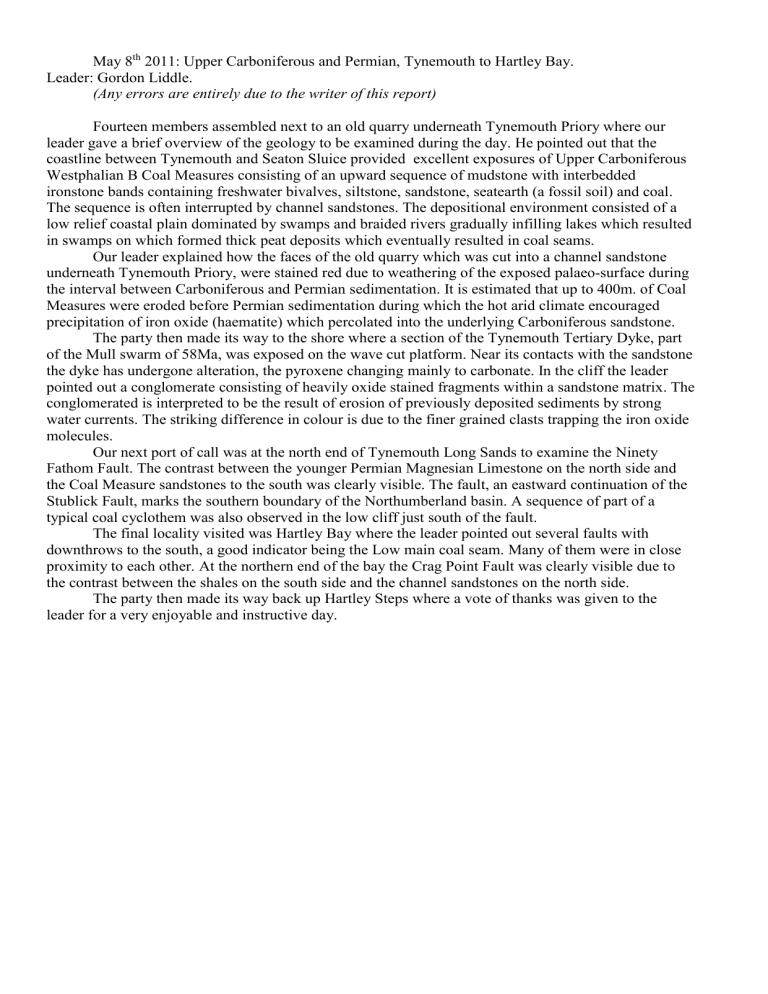
May 8 th 2011: Upper Carboniferous and Permian, Tynemouth to Hartley Bay.
Leader: Gordon Liddle.
(Any errors are entirely due to the writer of this report)
Fourteen members assembled next to an old quarry underneath Tynemouth Priory where our leader gave a brief overview of the geology to be examined during the day. He pointed out that the coastline between Tynemouth and Seaton Sluice provided excellent exposures of Upper Carboniferous
Westphalian B Coal Measures consisting of an upward sequence of mudstone with interbedded ironstone bands containing freshwater bivalves, siltstone, sandstone, seatearth (a fossil soil) and coal.
The sequence is often interrupted by channel sandstones. The depositional environment consisted of a low relief coastal plain dominated by swamps and braided rivers gradually infilling lakes which resulted in swamps on which formed thick peat deposits which eventually resulted in coal seams.
Our leader explained how the faces of the old quarry which was cut into a channel sandstone underneath Tynemouth Priory, were stained red due to weathering of the exposed palaeo-surface during the interval between Carboniferous and Permian sedimentation. It is estimated that up to 400m. of Coal
Measures were eroded before Permian sedimentation during which the hot arid climate encouraged precipitation of iron oxide (haematite) which percolated into the underlying Carboniferous sandstone.
The party then made its way to the shore where a section of the Tynemouth Tertiary Dyke, part of the Mull swarm of 58Ma, was exposed on the wave cut platform. Near its contacts with the sandstone the dyke has undergone alteration, the pyroxene changing mainly to carbonate. In the cliff the leader pointed out a conglomerate consisting of heavily oxide stained fragments within a sandstone matrix. The conglomerated is interpreted to be the result of erosion of previously deposited sediments by strong water currents. The striking difference in colour is due to the finer grained clasts trapping the iron oxide molecules.
Our next port of call was at the north end of Tynemouth Long Sands to examine the Ninety
Fathom Fault. The contrast between the younger Permian Magnesian Limestone on the north side and the Coal Measure sandstones to the south was clearly visible. The fault, an eastward continuation of the
Stublick Fault, marks the southern boundary of the Northumberland basin. A sequence of part of a typical coal cyclothem was also observed in the low cliff just south of the fault.
The final locality visited was Hartley Bay where the leader pointed out several faults with downthrows to the south, a good indicator being the Low main coal seam. Many of them were in close proximity to each other. At the northern end of the bay the Crag Point Fault was clearly visible due to the contrast between the shales on the south side and the channel sandstones on the north side.
The party then made its way back up Hartley Steps where a vote of thanks was given to the leader for a very enjoyable and instructive day.
